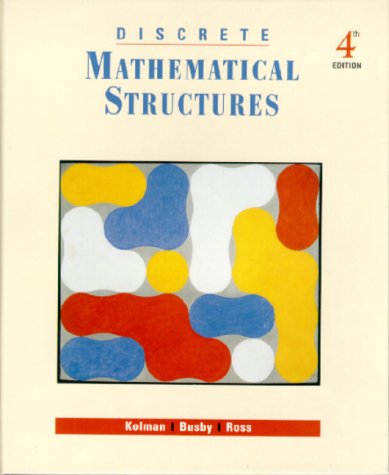
Synopsis
More than any other book in this field, this book ties together discrete topics with a theme. Written at an appropriate level of understanding for those new to the world of abstract mathematics, it limits depth of coverage and areas covered to topics of genuine use in computer science. Chapter topics include fundamentals, logic, counting, relations and digraphs, trees, topics in graph theory, languages and finite-state machines, and groups and coding. For individuals interested in computer science and other related fields — looking for an introduction to discrete mathematics, or a bridge to more advanced material on the subject.
"synopsis" may belong to another edition of this title.
From the Back Cover
More than any other book in this field, this book ties together discrete topics with a theme. Written at an appropriate level of understanding for those new to the world of abstract mathematics, it limits depth of coverage and areas covered to topics of genuine use in computer science. Chapter topics include fundamentals, logic, counting, relations and digraphs, trees, topics in graph theory, languages and finite-state machines, and groups and coding. For individuals interested in computer science and other related fields — looking for an introduction to discrete mathematics, or a bridge to more advanced material on the subject.
"About this title" may belong to another edition of this title.
Other Popular Editions of the Same Title
Search results for Discrete Mathematical Structures (4th Edition)
Discrete Mathematical Structures (4th Edition)
Seller: Hawking Books, Edgewood, TX, U.S.A.
Condition: Good. Meets or exceeds the good condition guidelines. Nice copy. Please read before purchase: Has severe spine crack - must be read gently - pages still intact. Five star seller - Buy with confidence! Seller Inventory # X0130831433X3
Discrete Mathematical Structures (4th Edition)
Seller: Bay State Book Company, North Smithfield, RI, U.S.A.
Condition: acceptable. The book is complete and readable, with all pages and cover intact. Dust jacket, shrink wrap, or boxed set case may be missing. Pages may have light notes, highlighting, or minor water exposure, but nothing that affects readability. May be an ex-library copy and could include library markings or stickers. Seller Inventory # BSM.QOL7
Discrete Mathematical Structures (4th Edition)
Seller: Patrico Books, Apollo Beach, FL, U.S.A.
hardcover. Condition: Good. Ships Out Tomorrow! Seller Inventory # 250131132
Discrete Mathematical Structures (4th Edn)
Seller: Anybook.com, Lincoln, United Kingdom
Condition: Fair. This is an ex-library book and may have the usual library/used-book markings inside.This book has hardback covers. In fair condition, suitable as a study copy. No dust jacket. Please note the Image in this listing is a stock photo and may not match the covers of the actual item,1200grams, ISBN:0130831433. Seller Inventory # 9788953
Buy Used
Quantity: 1 available
Discrete Mathematical Structures (4th Edition)
Seller: Toscana Books, AUSTIN, TX, U.S.A.
Hardcover. Condition: new. Excellent Condition.Excels in customer satisfaction, prompt replies, and quality checks. Seller Inventory # Scanned0130831433

